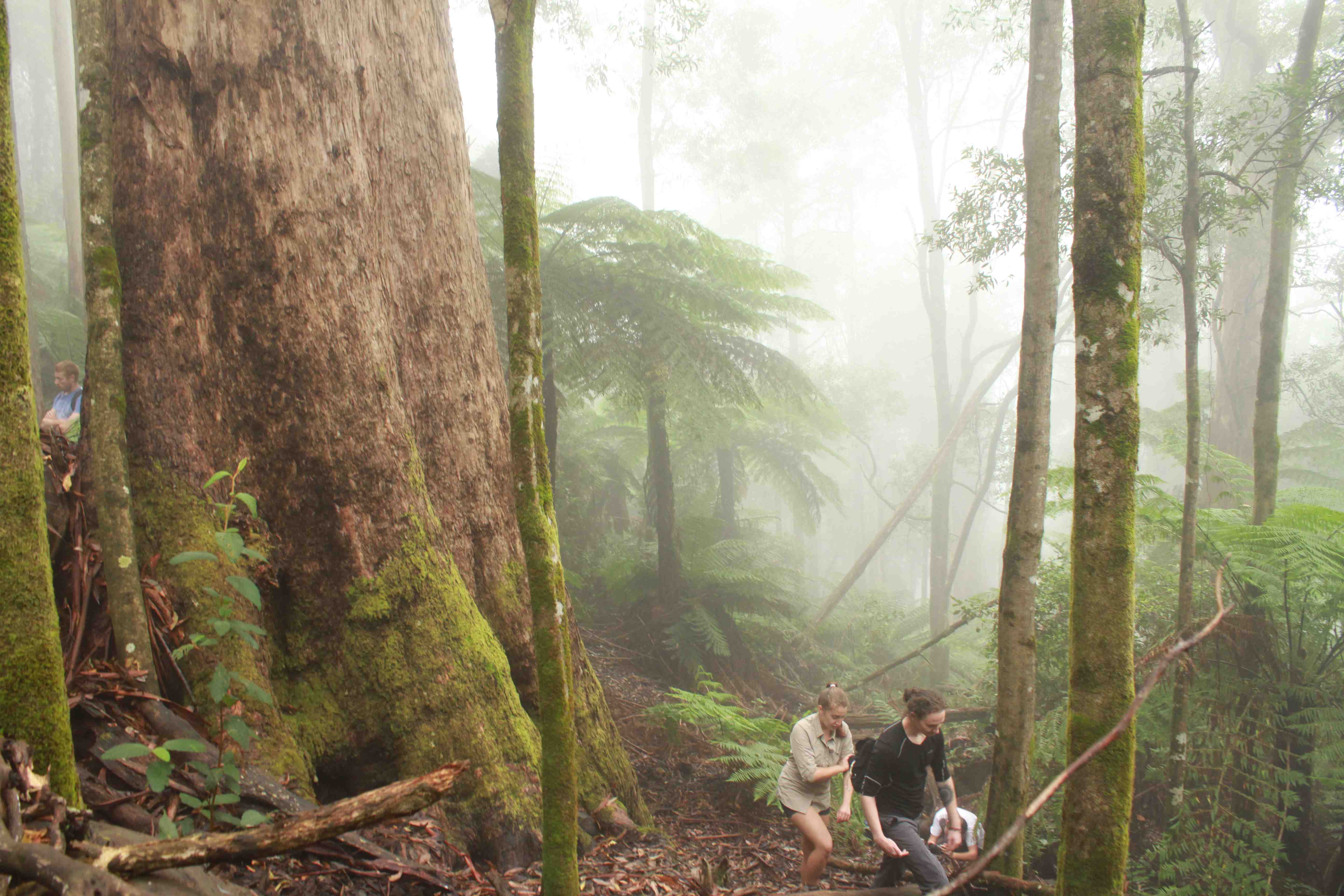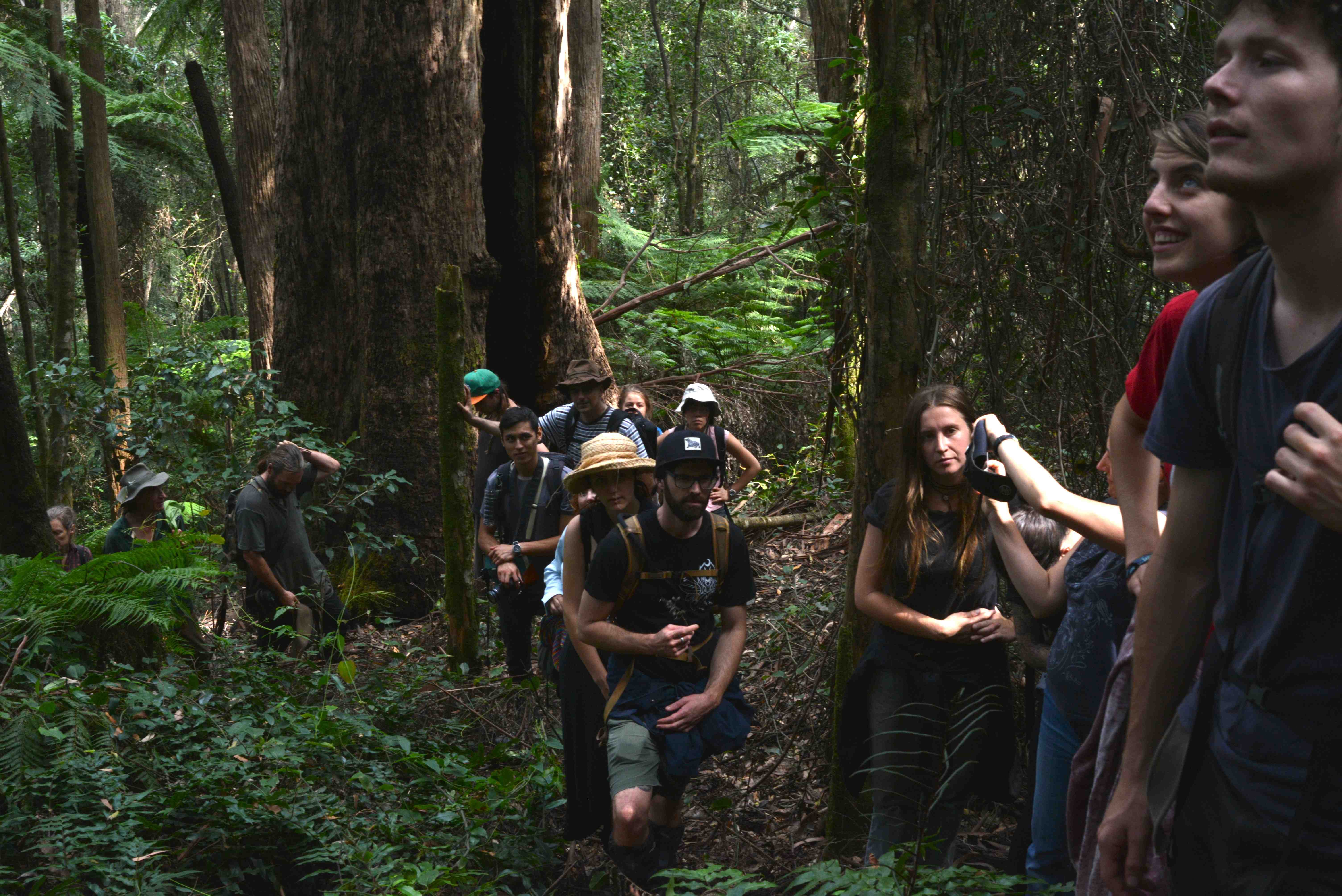Sixty people converged in the Kuark Forest over the weekend to learn and practice survey techniques for protected forest species. GECO forest campaigners presented educational presentations and workshops on species ecology, the East Gippsland forest campaign, survey report writing and rainforest biogeography. Valuable data was collected on the presence of rare, threatened and protected species in VicForests logging coupes. We also completed two forest carbon accounting plots adding to our forest carbon assessment data.

For the sixth survey camp we've organised in the last 12 months we decided to base ourselves in the remote heart of Kuark forest. The Kuark Gap campsite is perched just below the summit of Mt Kuark, a 900m high forested mountain top forming a divide between the cool temperate Errinundra plateau and Brodrib river catchment to the north, and the warm temperate Bemm river catchment to the south. Kuark Gap is a special place to camp. Old growth wet forest, with trees as large 9M circumference, is located directly adjacent to the camp. Sadly it is scheduled for logging by VicForests.


After learning about the ecology of the Endangered Long-footed potoroo on Saturday morning from local field ecologist Rena Gaborov, we collected a remote fauna camera we'd deployed during our last survey camp in the nearby forest where logging is planned. It was really exciting to find Long footed potoroo filmed on 6 different days over the two month period the camera was in the field. The following day this data was was compiled into a report in a workshop with camp participants. The report will be submitted to the Department of Environment who will zone a 150 hectare management zone. Sadly logging will still go ahead in 100 hectares of the 150 hectare zone and the 50 hectares of protected forest will most likely be squeezed into an area that is unsuitable for logging and unwanted by the industry.


We completed another two plots of forest carbon accounting surveys, gathering data on the volumes of biomass in one hectare survey plots. We collect data on the biomass by measuring all trees greater than 20cm diameter and all the fallen and standing dead wood. Using the biomass data and an allometric equation we can calculate a rough figure on how many tonnes of carbon are being stored in a forest. Tall wet Eucalypt forests of south east Australia have been found to be among the most carbon rich forests on earth, their conservation is essential to reduce emissions and mitigate climate change. Later this year when we have enough data we'll have a fair idea of how much carbon is being stored in these forests. The survey camps like this one provide an excellent opportunity to collect lots of data quickly, with the help of many keen volunteers.


A remarkable day was had surveying on Sunday. Three protected species, one vulnerable , one endangered and one critically endangered were discovered in forests scheduled for logging. Rarely seen and listed as vulnerable Slender tree ferns were recorded in the coupe and not far from them were the critically endangered East Gippsland galaxias (Galaxias aequipinnis), and a yet to be described species of crayfish, closely related to the endangered Orbost spiny crayfish (Euastacus spp.) These species are all sensitive to disturbance and are threatened by planned logging in the area. The legal protections required under the logging rules for the Galaxias fish and Spiny crayfish require a 100m buffer of protected vegetation either side of the creek, 1km up and downstream from the detection site. Our surveys efforts here should protect some of the forest here that VicForests would have logged without looking for protecting these endangered species.


Nocturnal spotlighting and call play back surveys detected greater glider and yellow bellied gliders in pretty tough conditions in wet weather. Despite a few showers a bit of mud over the few days, the weather was generally kind to us and spirits were always high.


It was so fantastic to meet lots of new people who were really enthusiastic and interested in conservation and field ecology. Sharing stories and knowledge each night over dinner at camp was a big highlight. Momentum is building to protect the Kuark forest from logging, this is the sixth camp we have held in the last 12 months. Hundred of people have visited Kuark forest to see what we stand to lose and witness the ongoing senseless destruction of the forest that is continuing.
Stay tuned for details of our next camp, we'd love to see you there.
